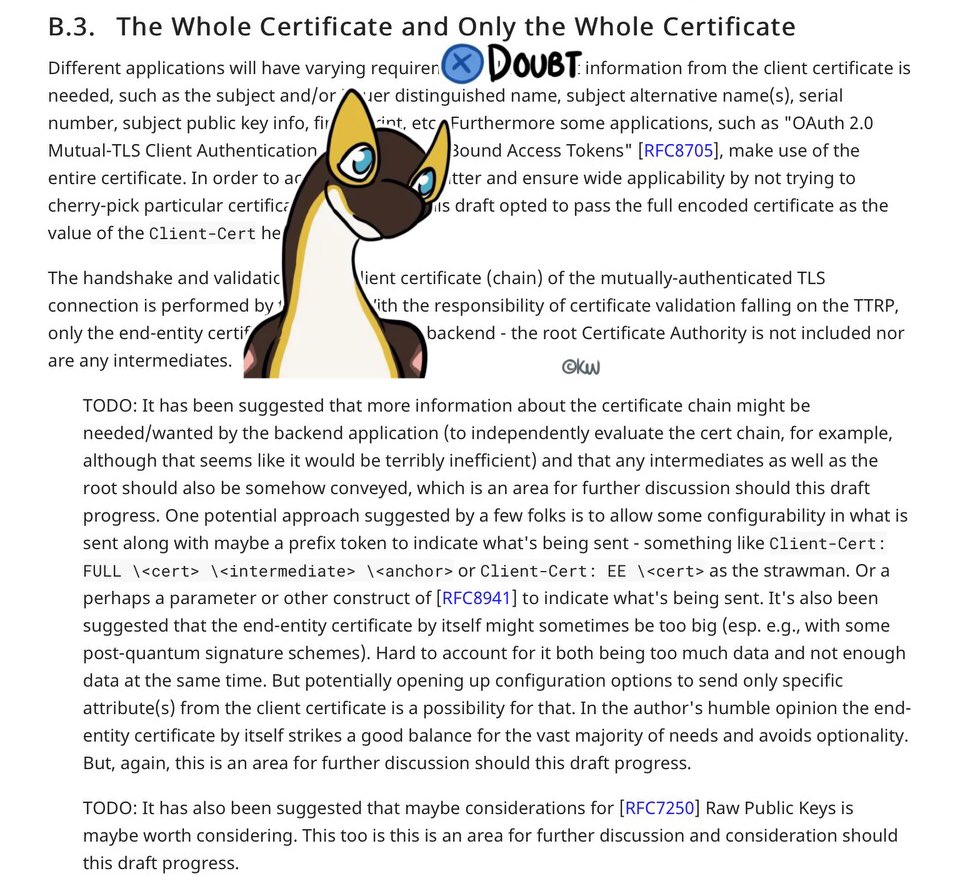
Ah how about
Client-Cert HTTP Header Field: Conveying Client Certificate Information from TLS Terminating Reverse Proxies to Origin Server Applications
For tonight’s light reading
Client-Cert HTTP Header Field: Conveying Client Certificate Information from TLS Terminating Reverse Proxies to Origin Server Applications
For tonight’s light reading
Client-Cert should only be used for the client that connects to a trusted network.
Remember how confusing X-Forwarded-For can get?
And how you have to pay cloudflare to actually give you the right one in another header?
Remember how confusing X-Forwarded-For can get?
And how you have to pay cloudflare to actually give you the right one in another header?

I once tried to put RSA PGP keys into DNS. Didn’t go well.
I can see the same happening here. Time to ditch rsa for Ed25519, Ed448
I can see the same happening here. Time to ditch rsa for Ed25519, Ed448

I love it when examples have copy and paste examples
But maybe I’ve seen too much base64 to recognize them like faces.
But maybe I’ve seen too much base64 to recognize them like faces.

I hope they permit the whole certificate chain.
It’s not enough in my eyes to just trust the endpoint.
Blocking the application capability to inspect and verify a certified public key to a trust anchor may be a significant barrier for regulated environments.
It’s not enough in my eyes to just trust the endpoint.
Blocking the application capability to inspect and verify a certified public key to a trust anchor may be a significant barrier for regulated environments.

Overall, I like the simplicity this offers, I agree with the justification that it be separate from the Forwarded RFC 7239 (which I did not know about) due to complicity. Manipulating headers on the edge is such a pain.
I hope this draft improves and includes the full chain
I hope this draft improves and includes the full chain
@threadreaderapp unroll
• • •
Missing some Tweet in this thread? You can try to
force a refresh








